Reduce the Risk of Contamination in Ultrasound-Guided Procedures

Infection prevention and control is a major focus of healthcare facilities to 1) lower the risk of patients contracting healthcare acquired infections (HAIs), 2) reduce costs that occur with HAIs, and 3) maintain compliance with The Joint Commission (TJC).
1) Healthcare-acquired infections, also known as nosocomial infections, occur in a patient during the process of care in a hospital or other health care facility which was not present or incubating at the time of admission. 2013 data from The Journal of the American Medical Association (JAMA) estimated that 440,000 infections occur annually among adult inpatients in the United States, and the analysis suggests at least 50% of those infections are preventable1.
Patient health and safety are the basis of providing health care, so facilities work hard and dedicate considerable resources to prevent these nosocomial infections
2) The JAMA study estimates the U.S. annual costs for the top five types of healthcare acquired infections as $9.8 billion, based on attributable costs and length-of-stay. The five major types of infections that occur in U.S. facilities include:
- Surgical site infection (SSI)
- Central line-associated bloodstream infection (CLABSI)
- Catheter-associated urinary tract infection (CAUTI)
- Ventilator-associated pneumonia (VAP)
- Clostridium difficile infection (CDI)1
SSIs contribute the most (33.7%) overall costs to the $9.8 billion total, while CLABSI incidents are the highest infection cost on a per-case basis at $45,8141.

3) To address the public safety risk, the Centers for Medicare & Medicaid Services (CMS) tie a facility's prevention of HAIs to the reimbursement policy. As such, The Joint Commission (TJC) focuses heavily on infection prevention as part of the organization's Hospital National Patient Safety Goals (NPSG) for accreditation.
For instance, NPSG 07.04.01 states "Use proven guidelines to prevent infection of the blood from central lines2."
In addition to the costs of treating patients who acquire a nosocomial infection, health care facilities can't afford to not meet the infection prevention requirements of TJC - or else they may face significant reimbursement implications.
Protecting patients and reducing costs through infection prevention is critical. So, what else can your facility do?
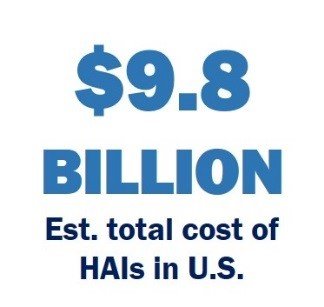
Let's think in terms of the most expensive per-case infection, as stated in the 2013 JAMA study: central line-associated bloodstream infections (CLABSI). The Joint Commission's Hospital Accreditation Program provides guidance to help reduce healthcare-acquired infections during short- and long-term central venous catheters (CVC) and peripherally inserted central catheter (PICC) lines. NPSG 07.04.01 outlines several key practices to lower the risk of CLABSIs, including one in particular:
"Use maximum sterile barrier precautions during central venous catheter insertion2."
Per the Centers for Disease Control & Prevention (CDC), these sterile barriers could include sterile gloves and a sterile patient drape3. In addition, with the prevalent use of ultrasound to place CVCs and PICC lines, this would also include the use of a sterile viral barrier to cover the ultrasound probe, as stated in CDC and FDA guidelines4,5.
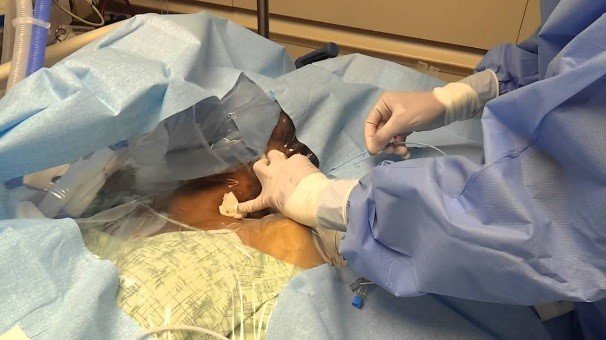
Even while following CDC guidelines to insert CVCs or PICC lines using ultrasound, did you know patients could still be at risk of acquiring an infection?
During an ultrasound-guided CVC or PICC procedure, sterile gel is often used when placing the catheters. However, recent incidents point to the risk of using contaminated sterile gel during central line placements, transesophageal echocardiography procedures, and other interventions. These cases point to contaminated gel as a cause of the spread of harmful nosocomial infections.
- 11 patients across four hospitals in Australia were infected when contaminated ultrasound gel was used in central line insertion and sterile procedures6
- Outbreak of health care-associated Burkholderia cenocepacia bacteremia and infection attributed to contaminated sterile gel used for central line insertion under ultrasound guidance and other procedures, American Journal of Infection Control (AJIC), 2017
- Nosocomial polyclonal outbreak affected 11 patients in neonatal and adult intensive care units, caused by bacteria found in contaminated ultrasound gel7
- Polyclonal outbreak of bacteremia caused by Burkholderia cepacia complex and the presumptive role of ultrasound gel, The Brazilian Journal of Infectious Diseases (BJID), 2015
- Seven patients infected with P. aeruginosa caused by contaminated ultrasound gel used for intraoperative transesophageal echocardiography8,9
- Ultrasound gel and infections: Researchers propose guideline to reduce risk, Infection Control and Hospital Epidemiology, 2012
- Pseudomonas aeruginosa respiratory tract infections associated with contaminated ultrasound gel used for transesophageal echocardiography, Centers for Disease Control & Prevention (CDC), 2012
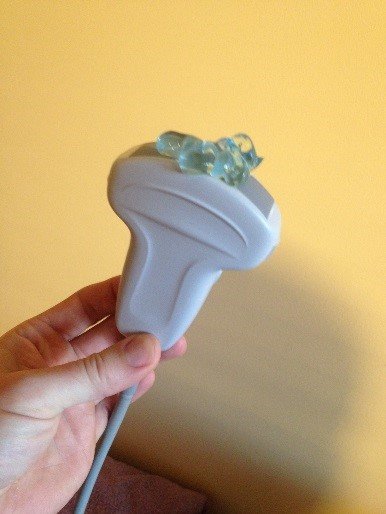
These cases demonstrate the risk of gel in contributing to the increase of nosocomial infections. In addition, other studies show that ultrasound gel can 1) cause harmful bacteria to be introduced into the bloodstream6,10, and 2) make the disinfection or sterilization process of devices, including ultrasound probes, less effective5.
There are many prevention methods to maintaining strong infection control standards and compliance, but ultrasound gel is rarely discussed. However, these published articles allow clinicians to be more aware of the risk contaminated ultrasound gel poses in the fight against harmful healthcare-associated infections.
Now that you're more aware of the risks of ultrasound gel, what can you do about it?
Change the way you think about ultrasound.

A new line of viral barriers enables 100% gel-free ultrasound procedures. Envision ultrasound probe covers and scanning pads are activated with a sterile liquid and require no gel. Removing gel from ultrasound-guided procedures is a transformational solution to addressing the risk of contamination during needle-guided interventions or while scanning non-intact skin.
Envision covers can be used during ultrasound-guided needle interventions, such as CVCs and PICCs, or in FNA biopsies, including of the thyroid or breast, which can help to reduce the risks of potential harmful contamination posed by ultrasound gel (ultrasound gel consists of a combination of water and propylene glycol, a substance that has documented susceptibility to contamination)11. The Envision pad can adhere to the patient or the ultrasound probe to scan non-intact or sensitive areas, including on neonates or post-surgical wound sites.
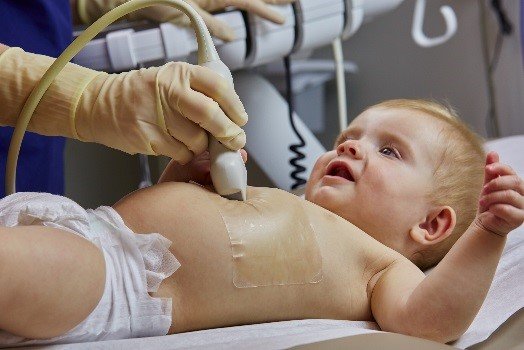
While ultrasound gel is itself made of a combination of water and propylene glycol, Envision viral barriers are designed with an adhesive on one side and a hydrophilic coating on the other, allowing for 100% gel-free ultrasound scanning.
The hydrophilic coating is activated by a liquid such as sterile saline, and once activated, acts as an acoustic couplant and is sufficiently lubricous to allow for dynamic scanning. The silicone adhesive can safely adhere to the patient or the probe due to its relatively low peel force.
Envision covers are made of our trusted CIV-Flex‚Ñ¢ material and are available in a variety of lengths.
In addition to reducing the risk of contamination, removing the gel from ultrasound procedures provides another major benefit: improved clinician workflow.
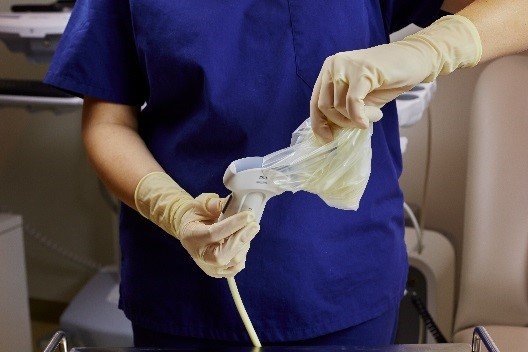
- The silicone adhesive easily and quickly attaches to the ultrasound probe face or patient
- Simply re-position the adhesive over the probe face to remove air bubbles, if needed
- Following the procedure, remove the cover or pad from the probe or the pad from the patient by peeling off the adhesive - it's quick, safe, and won't leave residue on the transducer
- No gel to clean up before sending the probe for high-level disinfection
Visit CIVCO.com/envision to see how Envision works and to request a complimentary sample.
Just add water with Envision to reduce the risk of gel contamination in your facility and simplify clinician workflow.
References
- Zimlichman E, Henderson D, Tamir O, et al. Health Care-Associated Infections: A Meta-analysis of Costs and Financial Impact on the US Health Care System. JAMA Intern Med. 2013;173(22):2039-2046. doi:10.1001/jamainternmed.2013.9763
- The Joint Commission. National Patient Safety Goals, Hospital Accreditation Program. January 2019. https://www.jointcommission.org/assets/1/6/NPSG_Chapter_HAP_Jan2019.pdf
- Centers for Disease Control & Prevention. Checklist for Prevention of Central Line Associated Blood Stream Infections. 2011. https://www.cdc.gov/hai/pdfs/bsi/checklist-for-CLABSI.pdf
- "Guidance for Industry and FDA Staff -Information for Manufacturers Seeking Marketing Clearance of Diagnostic Ultrasound Systems and Transducers." (September 10, 2015). www.fda.gov/MedicalDevices/DeviceRegulationandGuidance/GuidanceDocuments/ucm089001.htm
- William A. Rutala, Ph.D., M.P.H.1,2, David J. Weber, M.D., M.P.H.1,2, and the Healthcare Infection Control Practices Advisory Committee "CDC - Guideline for Disinfection and Sterilization in Healthcare Facilities, 2008" www.cdc.gov/infectioncontrol/pdf/guidelines/disinfection-guidelines.pdf
- Shaban RZ, Maloney S, Gerrard J, Collignon P, Macbeth D, Cruickshank M, Hume A, Jennison AV, Graham RMA, Bergh H, Wilson HL, Derrington P "Outbreak of health care-associated Burkholderia cenocepacia bacteremia and infection attributed to contaminated sterile gel used for central line insertion under ultrasound guidance and other procedures" AJIC 45 (2017) 954-8
- Esteban C. Nannini, Adriana Ponessa, Rosa Muratori, Patricia Marchiaro, Viviana Ballerini, Luis Flynn, Adriana S. Limansky "Polyclonal outbreak of bacteremia caused by Burkholderia cepacia complex and the presumptive role of ultrasound gel" The Brazilian Journal of Infectious Diseases 2015;19(5);543-545
- Oleszkowicz SC, Chittick P, Russo V, Keller P, Sims M, Band J. "Infections Associated with Use of Ultrasound Transmission Gel: Proposed Guidelines to Minimize Risk" Infection Control and Hospital Epidemiology Dec. 2012, vol. 33, no. 12
- Centers for Disease Control and Prevention "Pseudomonas aeruginosa respiratory tract infections associated with contaminated ultrasound gel used for transesophageal echocardiography - Michigan, December 2011-January 2012." MMWR Morb Mortal Wkly Rep. 2012 Apr 20;61:262-4.
- Australian Government Department of Health Therapeutic Goods Administration "Safety Advisory - risk of bacterial contamination" 2017 https://www.tga.gov.au/alert/meditech-ultrasound-gel
- Genc, O., & Umay, S. (January 01, 2020). Can ultrasound probes and gels be the source for opportunistic bacterial infections?. Medicine Science I International Medical Journal, 0, 1.





